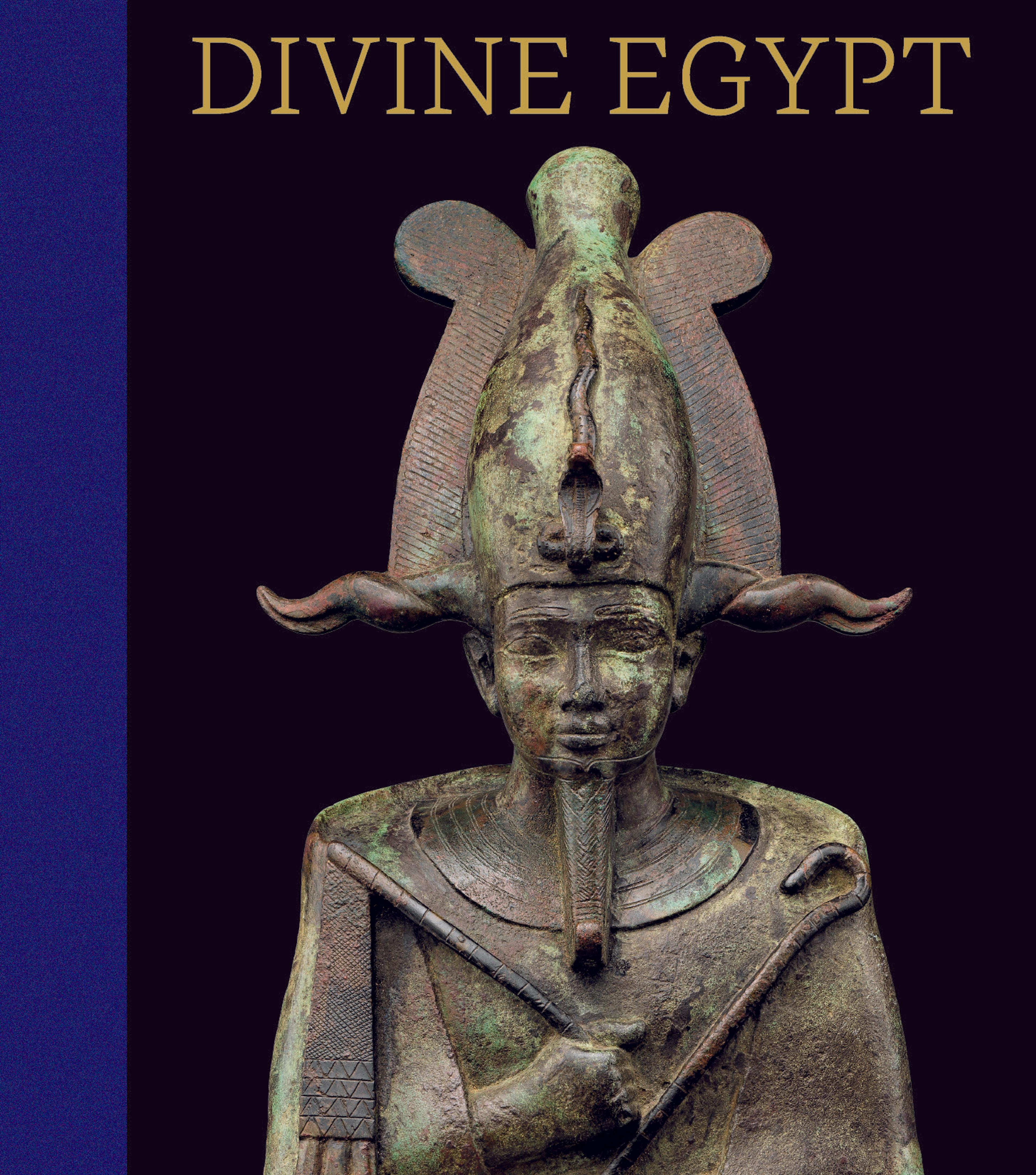Head of a cow goddess
The head depicts a goddess with a cow’s face and this zoomorphism and the sun disk between her horns convey divinity. The subject matter and the animal’s benevolent expression, along with the skillfully carved dark stone, suggest the statue dates to the reign of Amenhotep III.
Hathor, a powerful deity with wide ranging responsibilities among the gods, is the statue’s most likely subject and her affiliation with cows is an old one. However, Amenhotep III made statues honoring a number of lesser-known zoomorphic deities, so Mehet-weret, whose name means "Great Flood," could also be the subject. Unfortunately, the piece lacks an inscription and therefore a firm identity.
Hathor, a powerful deity with wide ranging responsibilities among the gods, is the statue’s most likely subject and her affiliation with cows is an old one. However, Amenhotep III made statues honoring a number of lesser-known zoomorphic deities, so Mehet-weret, whose name means "Great Flood," could also be the subject. Unfortunately, the piece lacks an inscription and therefore a firm identity.
Artwork Details
- Title: Head of a cow goddess
- Period: New Kingdom, possibly Ramesside Period
- Dynasty: Dynasty 19–20
- Date: ca. 1295–1070 BCE
- Geography: From Egypt
- Medium: Porphyritic diorite
- Dimensions: H. 53.6 × W. 28 × D. 33 cm, 55.4 kg (21 1/8 × 11 × 13 in., 122.2 lb.)
- Credit Line: Rogers Fund, 1919
- Object Number: 19.2.5
- Curatorial Department: Egyptian Art
More Artwork
Research Resources
The Met provides unparalleled resources for research and welcomes an international community of students and scholars. The Met's Open Access API is where creators and researchers can connect to the The Met collection. Open Access data and public domain images are available for unrestricted commercial and noncommercial use without permission or fee.
To request images under copyright and other restrictions, please use this Image Request form.
Feedback
We continue to research and examine historical and cultural context for objects in The Met collection. If you have comments or questions about this object record, please complete and submit this form. The Museum looks forward to receiving your comments.
